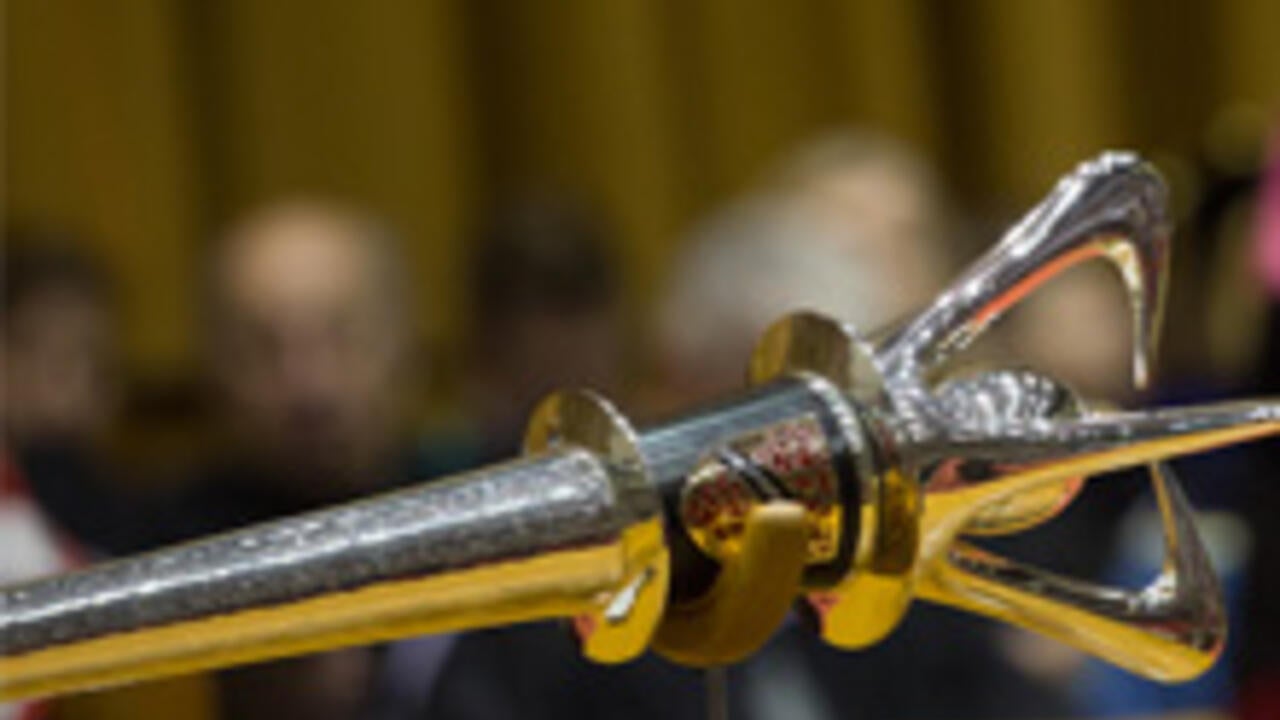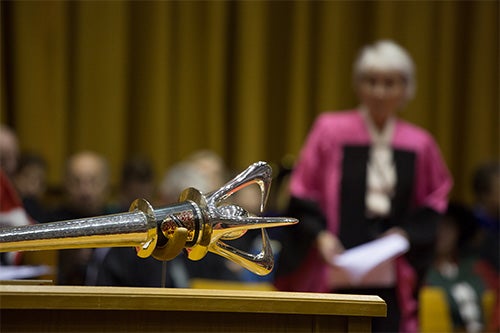
Convocation links Waterloo grads to history
The symbols of convocation reflect the spirit of innovation that marked the founding of the University of Waterloo

The symbols of convocation reflect the spirit of innovation that marked the founding of the University of Waterloo
By Staff Marketing and Strategic CommunicationsConvocation is a ceremony of ancient traditions and weighty symbols.
The Mace, a solid silver and ebony wand, was given to the University in 1965 by the family of the late Stanley F. Leavine. It was designed by Toronto artist Eric Aldwinckle and crafted by silversmith Harold Stacey to symbolize the university as it was at that time.
The Mace displays lions, chevrons, and the shield of Ontario, from which the University holds its charter to grant degrees.

The lions and chevrons also appear on the shield that is the University’s coat of arms which is imprinted on the graduates’ diplomas. Derived from traditional heraldry, it has been used since 1961 and was registered with the Court of the Lord Lyon in 1987. The shield uses the official colours of gold, black, and white.
The double chevrons were borrowed from the coat of arms of Lord Kitchener of Khartoum. The red lions are like those on the coat of arms of the Duke of Wellington, victor at the 1815 Battle of Waterloo. The lions also reflect the tough and innovative spirit of the University’s founders and builders. The black and white in the chevron are the colours of Prussia, reflecting the Germanic background of many Waterloo County settlers. Beneath the shield, appears the University’s motto, Concordia cum veritate, “In harmony with truth.”
The ritual of Convocation recalls the roots of the University as well as being a beginning for students who are entering a new stage in their lives. Indeed, both the symbols and the ceremony look back far beyond the beginning of the University of Waterloo, back to the centuries of university life in western civilization.
The founders were eager from the beginning to make it part of that long tradition, although they proudly asserted that they were building a new and innovative university, with close ties to industry and an emphasis on experiential education for building the future.

Read more
Meet five exceptional Waterloo graduate students crossing the convocation stage as Class of 2025 valedictorians

Read more
As we prepare to celebrate Fall 2025 convocation this week, I would like to extend my heartfelt congratulations to our class of 2025.

Read more
Meet the 14 exceptional students representing Waterloo’s newest grads
The University of Waterloo acknowledges that much of our work takes place on the traditional territory of the Neutral, Anishinaabeg, and Haudenosaunee peoples. Our main campus is situated on the Haldimand Tract, the land granted to the Six Nations that includes six miles on each side of the Grand River. Our active work toward reconciliation takes place across our campuses through research, learning, teaching, and community building, and is co-ordinated within the Office of Indigenous Relations.